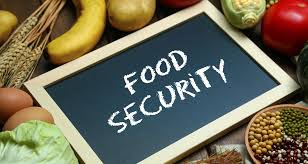Nigeria’s annual inflation rate eased to 23.18 percent in February from 24.48 percent in January 2025, according to the National Bureau of Statistics (NBS). This represents a decrease of 1.30 percent compared to the previous month. On a year-on-year basis, the inflation rate was 8.52 percent lower than the 31.70 percent recorded in February 2024. The NBS noted that this decline reflects a slowdown in price increases compared to the same period last year, though with a different base year, November 2009 = 100.
On a month-on-month basis, the inflation rate in February 2025 stood at 2.04 percent. Nigeria has been grappling with sharp increases in food prices, exacerbated in 2023 following President Bola Tinubu’s removal of petrol subsidies and the adoption of a floating exchange rate for the naira. This policy shift triggered a surge in the cost of staple foods, deepening poverty and worsening food insecurity. Rising prices over the past year have forced many farms and businesses to shut down, with agricultural producers cutting back due to insecurity and unpredictable weather conditions affecting rural areas.
In response to the crisis, President Tinubu declared a state of emergency on food insecurity in July 2023 and introduced measures to curb rising costs. Among these measures was the suspension of duties, tariffs, and taxes on essential food imports, including beans, wheat, and husked brown rice. Despite these efforts, food inflation has remained high. Last month, the NBS reported that Nigeria’s annual inflation rate had dropped to 24.48 percent in January from 34.80 percent in December 2024 after rebasing.
The latest NBS report highlights the contribution of various sectors to the headline inflation index, with food and non-alcoholic beverages accounting for 9.28 percent, followed by restaurants and accommodation services at 2.99 percent. Other contributors include transport (2.47 percent), housing, water, electricity, gas, and other fuels (1.95 percent), education services (1.44 percent), and health (1.40 percent). Clothing and footwear contributed 1.17 percent, while information and communication, personal care, and household maintenance accounted for smaller shares.
The percentage change in the average Consumer Price Index (CPI) for the twelve months ending February 2025 was 30.09 percent, reflecting a 3.91 percentage point increase compared to the 26.18 percent recorded in February 2024. Food inflation in February 2025 stood at 23.51 percent year-on-year, marking a decline of 14.41 percentage points from the 37.92 percent recorded in February 2024. The NBS attributes this drop partly to a change in the base year. However, on a month-on-month basis, food inflation in February 2025 was 1.67 percent.
Compared to January 2025, there was a decline in the average prices of key food items, including yam tubers, potatoes, soybeans, maize flour, cassava, and Bambara beans. The average annual food inflation rate for the twelve months ending February 2025 was 34.74 percent, an increase of 4.67 percentage points from the 30.07 percent recorded in February 2024.





